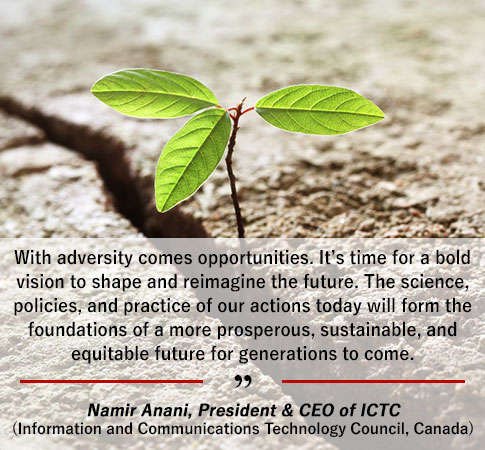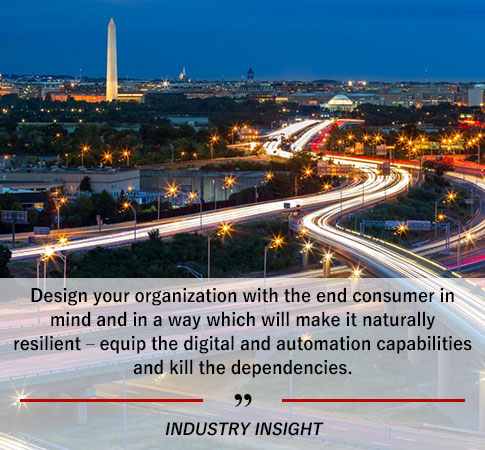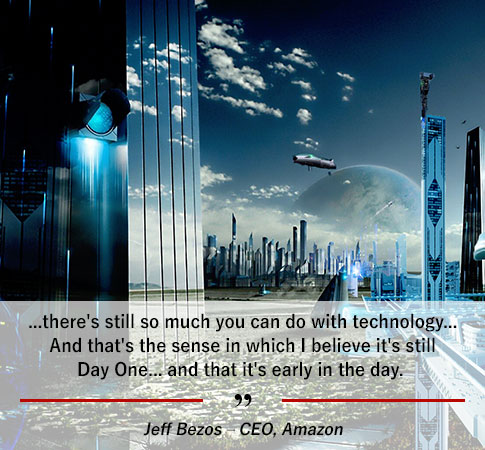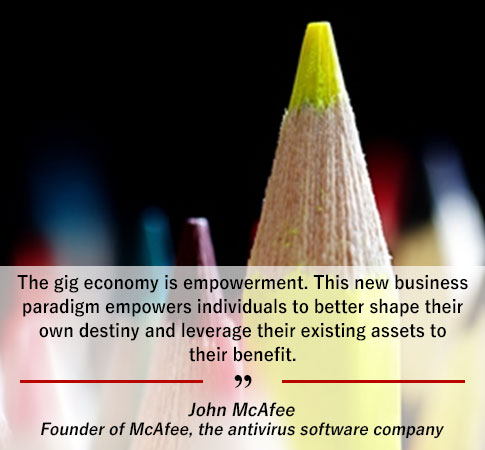INVITING APPLICATIONS
14th SSF EXCELLENCE AWARDS & RECOGNITION – 2025
LAST DATE: JUL-25 | APPLY NOW
For the first time in the history of mankind, the world has witnessed such an unprecedented turbulence in its spread, intensity and reach – be it business, society or even individuals. The epochal year has also demonstrated the highest level of interconnectedness between business and society, and its degree of impact on both. While no one can predict how long the turbulence will last, the other side is clear – it will never come back to ‘old normal’.
The environment throughout this year and beyond will be very different, but no less rich in possibilities for those who are resilient and ready to shift their mindsets to ride along this “Ocean Change” – much beyond just “Sea Change”.
The sharp drop in economic activity and job losses has prompted governments to act swiftly to mitigate the onslaught of this pandemic.
Massive liquidity provisions and favourable credit support have played a role in calming markets amid signs of considerable financial stress. Much of the world population has rapidly embraced a contact-free economy. From e-commerce and e-learning to e-medicine, this has become the new normal in most of the countries.

Automation and digital adoption also showed businesses a path to resilience and continuity, in a globally competitive landscape. Business and popular sentiment has shifted toward green as the colour of the post-pandemic economic recovery. This crisis has, more than ever, affirmed the significance of climate action, good health and wellbeing, sustainable cities and communities, jobs and economic growth, and the importance of a shared and equitable future for all people. The world economy, however, is at an inflection point that requires careful consideration and potential actions. A key question facing world leaders now is how to best imagine and shape a post-pandemic economy.
The construct of a sustainable post-pandemic business can be explored along the following five major changes which will define the shape of ‘Next Normal.’
Elevation of Consumerism
-
On Demand Services: Customers would prefer the flexibility to use services when needed and pay only for utilization – ‘pay as you go’. OTT platforms or web/ cloud services are some such examples in recent times. This is evident from the incremental revenue and profits such companies have made since last year. For instance, Forbes reported that Amazon delivered a record performance in 2020 with annual revenue up by 38% to $386 billion, a yearly increase of over $100 billion, making the net profit for Amazon up by 84% for the year as compared to last year. Business Line reported in March 2021, that OTT platforms witnessed 35% growth in paid users. Subscriptions per user have gone up by 8%, with the subscription revenue up by 42%.
-
Consumer Convenience & Confidence: Simplicity and ease to buy will have a significant role in consumers decisions, linked with options and price points. Quality of delivery will build the confidence of trust and create repeat customers. E-commerce platforms are great examples of this shift. Global research reports claim that almost 78% of consumers value convenience more now than they did before the pandemic, with nearly 90% saying that they spend more when brands offer seamless & flexible payment options that speed up their decision-making.
-
Weakening Loyalty: Stickiness to any particular brand, retailer or online portal will weaken significantly. With severe competition for scarce customer attention, customers will be easily willing to shift loyalties for the minutest of benefit.
A McKinsey report found that more than 75% of consumers have tried new brands, places to shop or methods of shopping so far during the pandemic. Product availability was the number one reason consumers sought out new retailers or products in the past couple months, followed by better prices and promotions.

Anywhere Operations
-
Operating Model: Service partners will need to work on an operating model designed to support customers everywhere, enable employees everywhere and manage the deployment of business services across distributed infrastructure. The model of Anywhere Operations is the interwoven twin engine of “digital and remote”. However, it is not as simple as just operating remotely. Providing a seamless and scalable digital experience requires changes in technology infrastructure, management practices, security and governance policies, and employee and customer engagement models. Gartner reports that, by the end of 2023, 40% of organizations will have applied this concept to deliver optimized, blended virtual and physical customer and employee experiences.
-
‘Homeshoring’: This will become a major trend. In the past, organizations would perform impact-based service offshoring assessments. Such services would traditionally be carried out from a single source, high security environment. The new-look organizations will conduct major impact-based job classifications for deciding roles that can be carried out from peoples’ homes i.e., homeshoring/ homesourcing – a direct employment model, not gig work, where all of a company’s processes, workflows, platforms, tools, and culture are designed to support the delivery of outsourced work by home-based employees. While during the pre-Covid era, the idea of a fully virtual workforce was rarely contemplated, today homeshoring is expanding by about 20% a year and it is on track to explode, says researcher IDC. Leading indicators such as the announcement of “virtual first” operations from Silicon Valley giants like DropBox and declining commercial real estate occupancy indicate that homesourcing is definitely poised for substantial growth.
-
Vocal for Local: Voices for protection of local jobs would become more vocal, while intensifying the focus on cost optimization. Supply chain will demand a fine balance between import and local supply. Organizations would avoid over-dependency on cross border supplies which impact the assembly line. A case in point is the statement by Kumar Mangalam Birla, who oversees the $46 billion Aditya Birla Group spread across 36 countries. Different countries are following different policies to create homegrown champions, according to Birla, who added that even globalization needs to have “a very sharp dimension of regionalization to it. ... We wouldn’t look at a company or a business where you source in one corner of the world and sell in another corner of the world... That is a reset that has happened on account of growing protectionism.” Even cross-border M&A needs to have a “strong element of regionalization,” in this new world.
Tectonic Shift in Technology
-
Simple with Faster Returns: Our reliance on digital solutions has never been greater; and it is not likely to reduce when this turbulence is over. The digital adoption will continue to grow. Organizations will embrace simpler tech initiatives with shorter paybacks, preferably during the year itself. A perfect example to quote here would be a very cost-effective RPA program, at the Global Business Services centre of HCCB (Hindustan Coca-Cola Beverages). The program is mandated with every automation project to necessarily have a payback of 6-12 months only. In another instance, an Indian multinational automotive manufacturing company, implemented ‘touchless automation’ for developing self-service kiosk resulting in 82% reduction in effort/ FTE, 100% data accuracy, 68% improvement in TAT, substantial savings, customer delight due to a user friendly/ simple interface and an overall positive business impact.

-
Ecosystem will Become Integral to Tech Strategy: Organizations would combine their ‘own’ investments with the larger ecosystem to create collaborative partnerships and to optimally balance ‘strong value proposition’ towards clients, ‘asset light’ approach, and the need to bring in new-age technologies. For instance, Uber, which has deployed innovative technology of its own, collaborates with google maps, rides on several intelligence systems, and uses the customer’s mobile device to provide a great service, while not owning a single cab.
-
Integrated Technologies: No more will technologies be thought of as ‘supporting’ the businesses. All future business will ‘be’ the technologies! Unique and innovative technology trends will become the core business propositions, using ultra intelligent techniques, such as block-chain and AR/VR. Logistics companies, fund managers and even real estate firms, amongst others, are fast moving into the space. Google Maps has been using both AR and VR technology in their “street view” option since long. An international realty brokering company, Sotheby's, is using VR to give their customers a real-time experience of visiting the property they are interested through immersive luxury home tours that can be experienced from the web browser on the phone, computer, or through a wearable headset. Even blockchain-based real estate is gaining popularity as a way for buyers, sellers and investors to interact with each other and learn about properties. Be it vacation rental houses, parking spots, dream homes –before long, they will all be purchased on a blockchain platform simply because it inspires/ enables transparency and trust, expedites contract processes, saves time and reduces costs.
Future of Talent
-
Skill Anywhere/ Work from Home (WFH): Remote working possibility will further define the operating norms by breaking myths of physical proximity of people, processes and tools for operating and optimizing the same. WFH initiated as a BCP is most likely to become the BAU option as well. At the same time, WFH raises a new set of challenges in data security and privacy. Either extreme will be dangerous, a fine balance of flexi-working with office connect will be imperative for success. Forrester claims that the number of remote workers at the end of 2021 will be three times the pre-pandemic levels. Location independence has become a necessity due to the pandemic. Infrastructure and operations (I&O) leaders hold the responsibility to build and manage distributed infrastructure, and are enabling decentralized, flexible, and resilient operating model for the geographically distributed stakeholders—customers, the workforce, suppliers, etc.
-
Gig Economy: The gig economy is by no means a new concept, but this past decade has seen it expand greatly and this would become more and more real in times to come – ensuring right skill at right cost, with flexibility of no fixed cost, supported by structured tech platform. ASSOCHAM stats convey a positive projection for the gig economy increasing to $455 billion by 2024 at a 17% CAGR. Even the government is creating provisions for the gig workers towards their social security amongst others.
-
Work Environment: Organization will step back and reset the future people-related policies for fostering culture, values, etc. with a blend of team working remotely and from office. Leadership styles, competency mapping, team engagement, performance measurement, feedback mechanism all would require going through a significant shift to support the next normal. Given the disruption to the 9-to-5 workday, employers will gradually decrease “synchronous” work that employees perform simultaneously and increase “asynchronous work” that workers can do on their own time on role based, common-access shared spaces. A Gartner survey in 2020, of 127 company leaders, representing HR, Legal & Compliance, Finance and Real Estate, revealed that 82% of respondents intend to permit remote working some of the time as employees return to the workplace.
Embracing ‘DAU’ (Disruption as Usual)
-
Beyond ‘BAU’: Survival requires businesses and their enterprise services to be leaner, meaner and agile. There is a stronger-than-ever need for enterprises to drive transformation across front office, mid office and back-office processes, and hence, periodic and even wide-spread disruption is going to become BAU. This is the essence of “moving away from the old normal”. Companies have understood that the time lines for staying in a stable environment is now hugely truncated. Disruption, both externally influenced as well as internally engineered, have become a necessity. Given these circumstances, cutting edge companies have created internal disruption teams across their businesses under a CDO position - Chief Disruption Officer (can also double up as Chief Transformation Officer) whose principal role is to manage and engineer change.

-
Outcome Based Expenses: Organizations will embark upon strategies that makes expense relatively more variable and outcome based, with saves on discretionary and fixed costs. Many business generation and client acquisition expenses are already operating on the same model. Several other expenses, especially those which are more discretionary in nature, will be linked to outcome, as opposed to input, or even output. For instance, employee compensation would increasingly become outcome linked, as would facility maintenance, services and technology deployment.
-
Financial Models: Organizations will proactively embrace and move from Capex to Opex model of transformation. This manifests itself with more and more “as a service” services being offered. Though this is more popular in the IT fields largely, it is rapidly gaining currency amongst several other business sections – business process, distribution, engagement, farming and housing, to name a few. Cost take-out and cash conservation are the overriding mantras for the CXOs. Restructuring of operations across countries will increase.
Conclusion
in 2020, a tumultuous picture of the future began to emerge, one that continues to be fraught with uncertainties. The global macroeconomic reality experienced an unprecedented state of flux. Many industries felt the full impact of this shift, while others found reprieve in being or becoming digital by default. Much of the world population embraced a contact-free ecosystem. With the recent burst of vaccine innovations, a glimmer of hope points to a stabilization in the trajectory of this pandemic. Six months into 2021, cautious optimism reigns around the world.
- It is time once again to reimagine the future while fully embracing the transformative nature of digital technologies and successfully amalgamating it with the passion of humans. The best way to predict the future is to create it, or rather co-create it together and collectively. And maybe that is the heritage we are destined to shape.”
ABOUT THE AUTHOR

Rakesh Sinha is Co-Founder, SSF Global; Founder & CEO, Quintes Global; ED & COO – RvaluE Group
Rakesh is a seasoned professional with an entrepreneurial experience of two decades in Advisory & Consulting, Business Services, Business Process Transformation and Technology. He is an IT Graduate and has acquired management skills from IIM Calcutta. He is one of the few leaders globally certified as Authorized Evaluator by ITsqc of Carnegie Mellon University, USA for eSCM, and a certified ‘Program Coach’ from Canada. He has been part of setting up and growing over 15 India and global shared service centers. He has carried out over 100 transformational engagements enabling the team to deliver business impact of over US$400 mn to clients and identifying process consolidation opportunities for 5000+ FTEs.
His expertise and experience have been largely in the fields of Sourcing Model Strategy, Benchmarking, Location Strategy, Offshoring, RFP & Deal Management, Business Process Redesign, Vision Planning for Globalizing Shared Services, Business Case Design, Process Migration, People Transition, and other related areas, cutting across F&A, HR, Supply Chain & Procurement, Customer Life Cycle, and IT functions both in Manufacturing and Services domains.
Rakesh co-founded SSF to create and disseminate knowledge for excellence in BPM for the ecosystem in Global India. He has authored several pioneering research reports and books and is well-recognized in the industry.
In December 2020, Rakesh was recognized by Economic Times as one of the ‘Most Promising Business Leader in Asia for 2020-21’. In 2016, he was identified as one of the top 30 Influential young entrepreneurs of the year by the Insight Success magazine and featured on the cover page. He was honored as one of ‘India’s Greatest Leaders of 2017-18 – Pride of the Nation’ by AsiaOne Magazine & URS Media. In addition, Rakesh has been felicitated/ honored by many leading media houses in several of their industry magazines as ‘Pioneer’, ‘Thought Leader’, ‘Guru of Business Process Space’, etc. He was one of the youngest to be invited as member of Management Council of Delhi Management Association. As part of his social responsibilities, Rakesh mentors young leaders from leading management institutes and devotes time and energy to social projects with like-minded people. He is a creative thinker and has a personal mission to create a ‘Think Tanks for 2030’ and make India a better place to live in the global village.



 Ask an Expert
Ask an Expert



